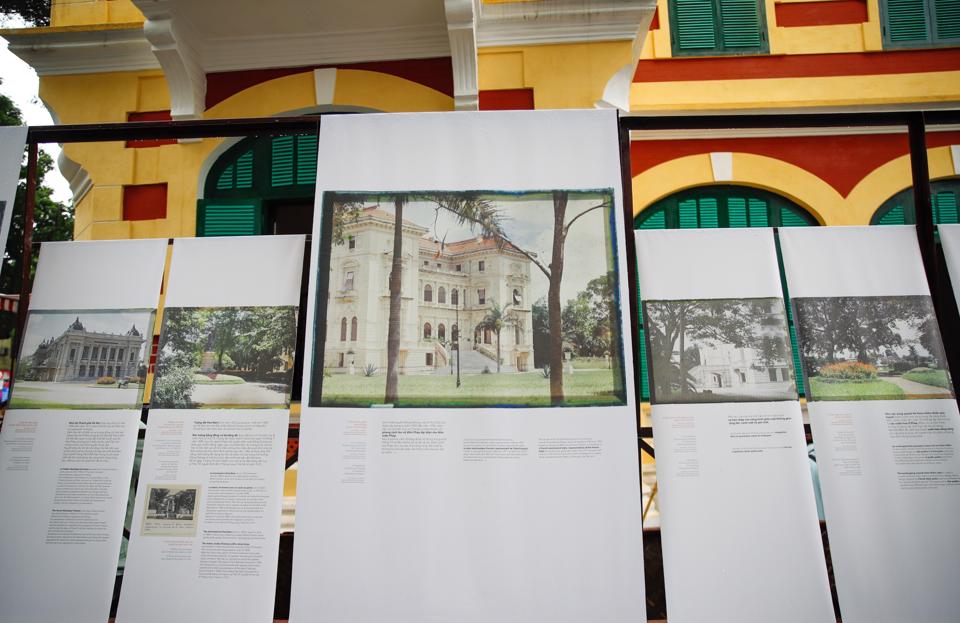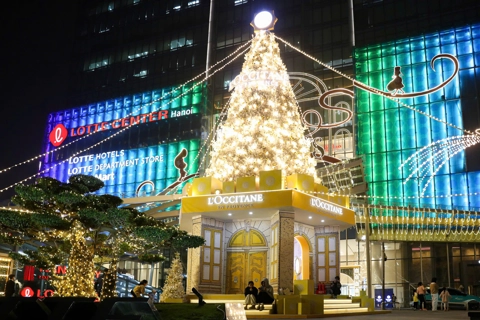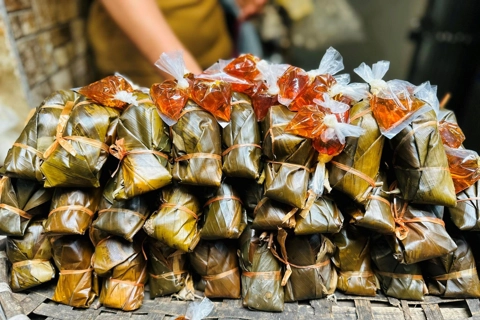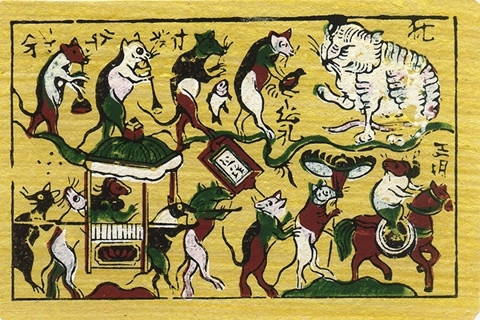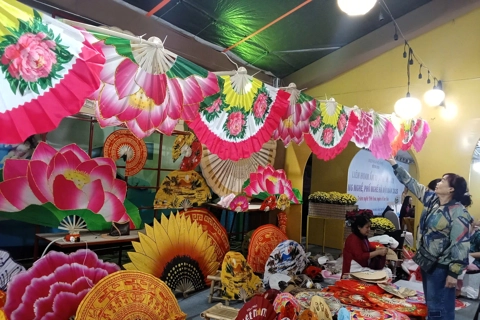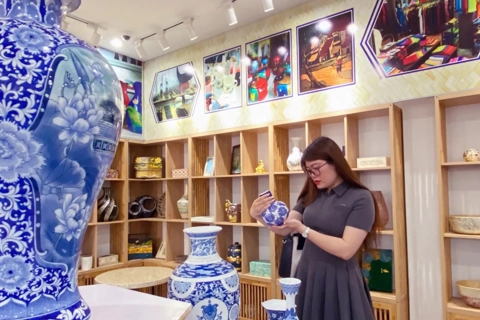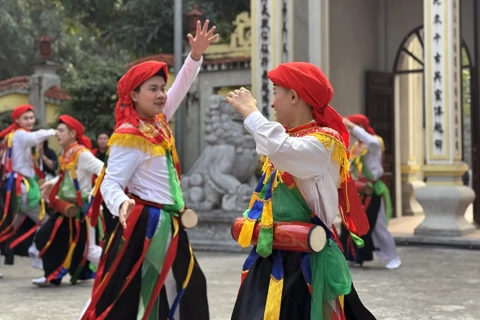Thirty first color photos of Hanoi displayed
Both locals and visitors to Hanoi will have the opportunity to learn about the changes in the capital's architecture and the landscape's transformation throughout history.
The photo exhibition, themed "Hanoi - The Beginning of a Western City in Southeast Asia", is part of the 12th Vietnam-France Cooperation Conference organized by Hanoi and the Ile-de-France Region.
| The space of the photo exhibition. Photo: Nam Nguyen |
Being on display until April 22, the exhibition features 30 color photographs taken by Léon Busy between 1915 and 1921, considered the first color photographs of Hanoi.
These photographs show the appearance of Hanoi as it changed and developed. In addition to the public works that have long been part of the process of changing Hanoi's urban form, many details appear on these frames that show the spread of Western culture, even into the living space of Hanoians in the Old Quarter.
Highlights of the photo exhibitions include a photo taken inside Quan Thanh Temple showing a large crystal chandelier imported directly from France; the image of beautiful Vietnamese girls with macaron hair and large buckled shoes - a popular image in French fashion magazines in the 1910s; photos of press posters in French testifying to the excitement of the French press in Vietnam in the early twentieth century.
According to Duong Duc Tuan, deputy chairman of the Hanoi People's Committee, cooperation between Hanoi and the Ile-de-France dates back to 1989. It is the first decentralized cooperation agreement signed between France and Vietnam and one of the oldest international partnerships of the Ile-de-France region.
| “Hanoi - The Beginning of a Western City in Southeast Asia” featured 30 color photographs taken by Léon Busy. Participants in the exhibition. Photo: Nam Nguyen |
"The two localities have worked together effectively over the past year in sustainable development, urban planning, culture and heritage conservation," he said.
"In the coming period, the city of Hanoi and the Ile-de-France region will continue to collect, exhibit and present documents on the emergence of the Old Quarter and the influences and interactions of cultures between France and Vietnam in the first half of the twentieth century," he added.
Villa 49 Tran Hung Dao is the first French villa restored and embellished by Hanoi with the technical support of the Ile-de-France Region.
In February 2022, Hanoi and the Ile-de-France region signed cooperation plans for 2022-2025, focusing on planning and urban management, the French region's strengths. In June 2018, a joint action plan was signed for 2018-2021, including new cooperation projects with the Vietnamese capital in innovation and research.
The Ile-de-France region also supported the inscription of the Hanoi Citadel on the UNESCO World Heritage List.
| The photos showcase the strong transformation of Hanoi in terms of culture and architect during the early 20 century. Photo: Nam Nguyen |



